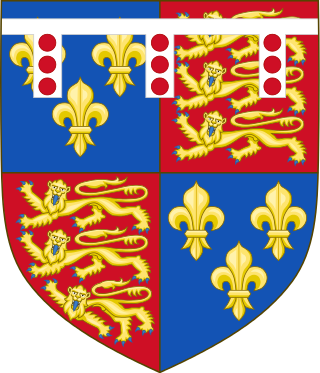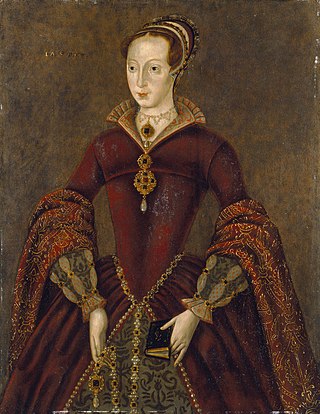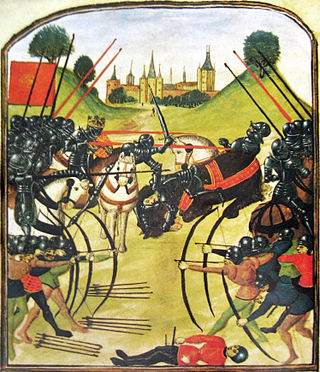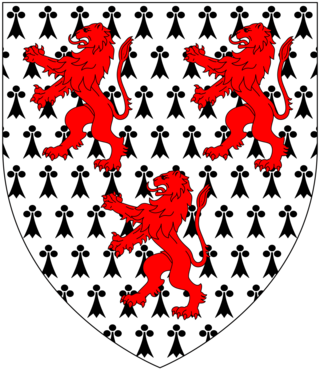
The Tower of London, officially His Majesty's Royal Palace and Fortress of the Tower of London, is a historic castle on the north bank of the River Thames in central London, England. It lies within the London Borough of Tower Hamlets, which is separated from the eastern edge of the square mile of the City of London by the open space known as Tower Hill. It was founded toward the end of 1066 as part of the Norman Conquest. The White Tower, which gives the entire castle its name, was built by William the Conqueror in 1078 and was initially a resented symbol of oppression, inflicted upon London by the new Norman ruling class. The castle was also used as a prison from 1100 until 1952, although that was not its primary purpose. A grand palace early in its history, it served as a royal residence. As a whole, the Tower is a complex of several buildings set within two concentric rings of defensive walls and a moat. There were several phases of expansion, mainly under kings Richard I, Henry III, and Edward I in the 12th and 13th centuries. The general layout established by the late 13th century remains despite later activity on the site.

The House of Tudor was an English and Welsh dynasty that held the throne of England from 1485 to 1603. They descended from the Tudors of Penmynydd, a Welsh noble family, and Catherine of Valois. The Tudor monarchs ruled the Kingdom of England and the Lordship of Ireland for 118 years with five monarchs: Henry VII, Henry VIII, Edward VI, Mary I and Elizabeth I. The Tudors succeeded the House of Plantagenet as rulers of the Kingdom of England, and were succeeded by the Scottish House of Stuart. The first Tudor monarch, Henry VII, descended through his mother from the House of Beaufort, a legitimised branch of the English royal House of Lancaster, a cadet house of the Plantagenets. The Tudor family rose to power and started the Tudor period in the wake of the Wars of the Roses (1455–1487), which left the main House of Lancaster extinct in the male line.

Henry VI was King of England from 1422 to 1461 and again from 1470 to 1471, and disputed King of France from 1422 to 1453. The only child of Henry V, he succeeded to the English throne upon his father's death, at the age of nine months; and succeeded to the French throne on the death of his maternal grandfather, Charles VI, shortly afterwards.

Margaret Plantagenet, Countess of Salisbury, was the only surviving daughter of George Plantagenet, Duke of Clarence, a brother of Kings Edward IV and Richard III, by his wife Isabel Neville. As a result of her marriage to Richard Pole, she was also known as Margaret Pole. One of the few members of the House of Plantagenet to have survived the Wars of the Roses, she was executed in 1541 at the command of King Henry VIII, the second monarch of the House of Tudor, who was the son of her first cousin, Elizabeth of York. Pope Leo XIII beatified her as a martyr for the Catholic Church on 29 December 1886. One of her sons, Reginald Pole, was the last Catholic Archbishop of Canterbury.

The House of York was a cadet branch of the English royal House of Plantagenet. Three of its members became kings of England in the late 15th century. The House of York descended in the male line from Edmund of Langley, 1st Duke of York, the fourth surviving son of Edward III. In time, it also represented Edward III's senior line, when an heir of York married the heiress-descendant of Lionel, Duke of Clarence, Edward III's second surviving son. It is based on these descents that they claimed the English crown. Compared with its rival, the House of Lancaster, it had a superior claim to the throne of England according to cognatic primogeniture, but an inferior claim according to agnatic primogeniture. The reign of this dynasty ended with the death of Richard III of England at the Battle of Bosworth Field in 1485. It became extinct in the male line with the death of Edward Plantagenet, 17th Earl of Warwick, in 1499.

Henry Holland, 3rd Duke of Exeter, 3rd Earl of Huntington was a Lancastrian leader during the English Wars of the Roses. He was the only son of John Holland, 2nd Duke of Exeter, and his first wife, Anne Stafford. His maternal grandparents were Edmund Stafford, 5th Earl of Stafford, and Anne of Gloucester.

John Holland, 2nd Duke of Exeter, 2nd Earl of Huntingdon, was an English nobleman and military commander during the Hundred Years' War. His father, the 1st Duke of Exeter, was a maternal half-brother to Richard II of England, and was executed after King Richard's deposition. The Holland family estates and titles were forfeited, but John was able to recover them by dedicating his career to royal service. Earl of Huntingdon, of the Castle, town, manor of Barnstable and manors of Dartington, Fremington, South Molton, Torrington, Devon, Stevington, Bedfordshire, Ardington, Berkshire, Haslebury, Blagdon and Somerset. Holland rendered great assistance to his cousin Henry V in his conquest of France, fighting both on land and on the sea. He was marshal and admiral of England and governor of Aquitaine under Henry VI.
Thomas Norton was an English lawyer, politician, writer of verse, and playwright.

The rack is a torture device consisting of a rectangular, usually wooden frame, slightly raised from the ground, with a roller at one or both ends. The victim's ankles are fastened to one roller and the wrists are chained to the other. As the interrogation progresses, a handle and ratchet mechanism attached to the top roller are used to very gradually retract the chains, slowly increasing the strain on the prisoner's shoulders, hips, knees, and elbows and causing excruciating pain. By means of pulleys and levers, this roller could be rotated on its own axis, thus straining the ropes until the sufferer's joints were dislocated and eventually separated. Additionally, if muscle fibres are stretched excessively, they lose their ability to contract, rendering them ineffective.
The Scavenger's daughter, also known as the Skevington's gyves, iron shackle, stork, or Spanish A-frame was a type of torture device invented during the reign of King Henry VIII of England.

Anne Askew, married name Anne Kyme, was an English writer, poet, and Protestant preacher who was condemned as a heretic during the reign of Henry VIII of England. She and Margaret Cheyne are the only women on record known to have been both tortured in the Tower of London and burnt at the stake.
John Gerard was a priest of the Society of Jesus who operated a secret ministry of the underground Catholic Church in England during the Elizabethan era.
John Felton was an English Catholic martyr, executed during the reign of Elizabeth I. Felton was arrested for fixing a copy of Pope Pius V's bull Regnans in Excelsis excommunicating Queen Elizabeth, to the gates of the Bishop of London's palace near St. Paul's.

Nicholas Owen, S.J., was an English Jesuit lay brother who was the principal builder of priest holes during the reigns of Queen Elizabeth I and James I of England. Owen built many priest holes in the buildings of English Catholics from 1588 until his final arrest in 1606, when he was tortured to death by prison authorities in the Tower of London. Owen is honoured as a martyr by the Catholic Church and was canonized by Pope Paul VI in 1970.

Lady Jane Grey, also known as Lady Jane Dudley after her marriage and as the "Nine Days' Queen", was an English noblewoman who claimed the throne of England and Ireland from 10 to 19 July 1553.

Thomas de Courtenay, 5th/13th Earl of Devon was a nobleman from South West England. His seat was at Colcombe Castle near Colyton, and later at the principal historic family seat of Tiverton Castle, after his mother's death. The Courtenay family had historically been an important one in the region, and the dominant force in the counties of Devon and Cornwall. However, the rise in power and influence of several gentry families and other political players, in the years leading up to Thomas' accession to the earldom, threatened the traditional dominance of the earls of Devon in the area. Much of his life was spent in armed territorial struggle against his near-neighbour, Sir William Bonville of Shute, at a time when central control over the provinces was weak. This feud forms part of the breakdown in law and order in England that led to the Wars of the Roses.
The Bonville–Courtenay feud of 1455 engendered a series of raids, sieges, and attacks between two major Devon families, the Courtenays and the Bonvilles, in south west England, in the mid-fifteenth century. One of many such aristocratic feuds of the time, it became entwined with national politics due to the political weight of the protagonists. The Courtenay earls of Devon were the traditional powerbrokers in the region, but by this time a local baronial family, the Bonvilles, had become more powerful and rivalled the Courtenays for royal patronage. Eventually this rivalry spilled over into physical violence, including social disorder, murder, and siege.

The Wars of the Roses, known at the time and in following centuries as the Civil Wars, were a series of civil wars fought over control of the English throne from 1455 to 1487. The wars were fought between supporters of the House of Lancaster and House of York, two rival cadet branches of the royal House of Plantagenet. The conflict resulted in the end of Lancaster's male line in 1471, enabling the Tudor family to inherit their claim to the throne through the female line. Conflict was largely brought to an end upon the union of the two houses through marriage, creating the Tudor dynasty that would subsequently rule England.
Buckingham's rebellion was a failed but significant uprising, or collection of uprisings, of October 1483 in England and parts of Wales against Richard III of England.

Sir George Chudleigh, 1st Baronet, of Ashton, Devon, was an English landowner and politician, who sat in the House of Commons at various times between 1601 and 1625. He had close family connections to a group of Devon Presbyterians, including Sir William Strode.














